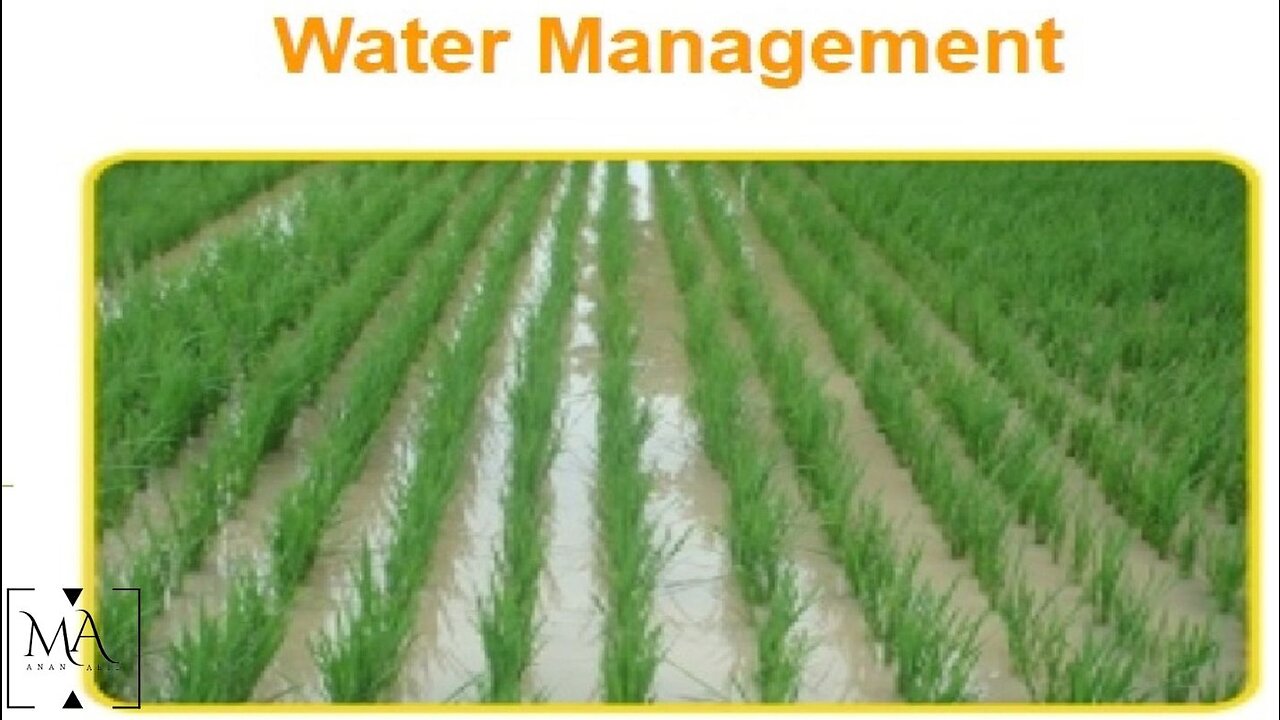Premium Only Content

When water should be dried in the Rice field
In rice cultivation, water management is crucial for successful growth. The timing of drying the rice field depends on the stage of rice growth and the specific cultivation method being used. Here are some key points to consider:
Initial Flooding: Rice fields are typically flooded after sowing the seeds. This flooded condition helps control weeds and pests. The water is usually maintained at a shallow depth (about 2-5 cm) during the early stages of germination and seedling growth, which lasts around 10-14 days.
Vegetative Stage: As the rice plants continue to grow, the water depth is gradually increased to provide sufficient moisture for the roots. During the vegetative stage, the water depth may range from 5-15 cm. This stage lasts until the plants develop their first panicle (flowering structure).
Reproductive Stage: Once the rice plants start flowering, the water depth is reduced to prevent lodging (falling over) of the plants due to the weight of the developing panicles. The water level is typically lowered to about 5-10 cm.
Ripening Stage: During the grain-filling stage (ripening), the water is further reduced or even completely drained, especially in modern rice cultivation practices. This helps the grains to mature and dry properly.
Harvest: Just before harvesting, the field is often completely drained to allow the rice plants to dry out and facilitate the harvesting process.
It's important to note that the exact timing of drying the rice field can vary based on factors such as the rice variety, climate, soil type, and local agricultural practices. Traditional methods may involve different water management approaches compared to modern, mechanized rice farming. Additionally, some rice varieties are specifically bred for upland or rain-fed conditions and may not require constant flooding.
-
 23:27
23:27
Rethinking the Dollar
4 hours agoWealth Protection SECRETS Learned from Wildfires w/ Paul Stone
16.8K3 -
 LIVE
LIVE
Flyover Conservatives
20 hours agoInsider Reacts to Trump’s 100 Hours: Davos, WHO, Climate Change, DEI… - Alex Newman | FOC Show
367 watching -
 1:04:30
1:04:30
Battleground with Sean Parnell
7 hours agoPresident Trump Is Flooding The Zone
93.8K8 -
 UPCOMING
UPCOMING
We Like Shooting
13 hours agoWe Like Shooting 595 (Gun Podcast)
128 -
 LIVE
LIVE
megimu32
2 hours agoON THE SUBJECT: 90s Toys, Fat Phobia, and Crying Libs!
188 watching -
 LIVE
LIVE
Right Side Broadcasting Network
11 hours agoLIVE REPLAY: President Trump Addresses House GOP in Doral, FL - 1/27/25
5,209 watching -
 2:37:19
2:37:19
Robert Gouveia
5 hours agoTrump Addresses House Republicans; Tulsi Confirmation Fight; CIA Lab Leak
35.3K14 -
 54:38
54:38
LFA TV
1 day agoMankind Refuses the Way of Peace | TRUMPET DAILY 1.27.25 7pm
37.8K2 -
 1:41:27
1:41:27
2 MIKES LIVE
7 hours ago2 MIKES LIVE #171 Deep Dive Monday!
18.2K1 -
 1:32:53
1:32:53
The Big Mig™
3 hours agoOperation Gideon, The Truth w/ Ret. Green Beret Jordan Goudreau
29.4K6